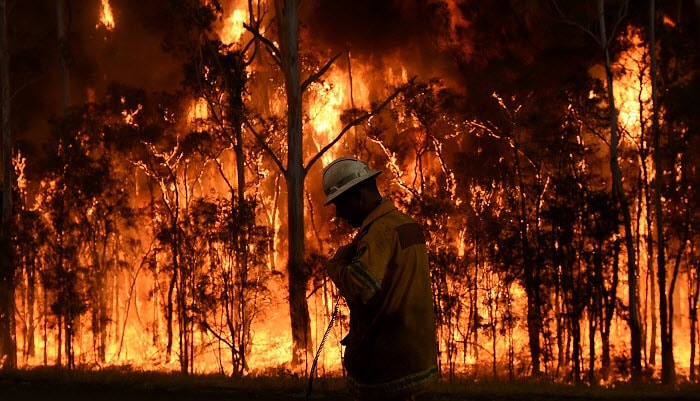Untangling the Importance of an In-depth BAL Report for Your Residential property
Untangling the Importance of an In-depth BAL Report for Your Residential property
Blog Article
Just How BAL Report Impacts Shrub Fire Security Procedures
In the world of bush fire defense, the Structure Attack Level (BAL) report stands as a crucial tool that substantially affects the safety and security and resilience of residential properties in fire-prone areas - BAL Report. The impact of a BAL evaluation extends much beyond simple documentation; it serves as the cornerstone for determining the appropriate building requirements and fire protection procedures necessary to minimize the risks presented by bushfires. As areas face increasingly serious fire periods, comprehending just how the BAL record shapes these protective procedures comes to be critical for homeowners, building contractors, and policymakers alike
Understanding the Bushfire Assault Level

Significance of BAL Report Evaluation

Additionally, the BAL report assessment serves as a foundational action in abiding by lawful responsibilities and requirements associated with bushfire security. Regional councils and authorities usually mandate the entry of a BAL record as component of the planning and structure approval procedure to make sure that properties are sufficiently secured versus bushfire threats. Failing to conduct a complete BAL record analysis can lead to inadequate defense measures, leaving properties vulnerable to devastating bushfire events.
Building Specifications Based Upon BAL
A comprehensive understanding of the Bushfire Assault Degree (BAL) makes it possible for property owners to implement construction criteria customized to their details threat account. Construction standards based on BAL are critical in alleviating the effect of bushfires on homes. The BAL rating classifies the prospective risk a home faces during a bushfire on a range from BAL-Low to BAL-FZ (Flame Area)
Applying Fire Security Steps
With the structure of building and construction requirements based on Bushfire Strike Level (BAL) in position, the emphasis now shifts in the direction of the useful implementation of fire protection steps to fortify residential properties versus bushfire hazards. Implementing fire security measures includes a mix of passive and active approaches to boost the resilience of structures in bushfire-prone locations. Passive measures include utilizing fire-resistant building products, mounting ash guards on vents, securing gaps in walls and roofs, and preserving a clear space around the building without flammable greenery. discover this Energetic actions encompass having firefighting devices readily offered, such as hose pipes and water pumps, along with producing a defendable room around the home by removing plants and having a properly maintained yard. Furthermore, creating a discharge strategy and making sure all residents know emergency situation treatments are vital components of effective fire protection steps. By integrating both passive and active methods, properties can considerably minimize their susceptability to bushfire occurrences and raise the safety and security of occupants.
Safeguarding Homes Versus Bushfires
Successfully protecting homes versus the devastating effects of bushfires requires a comprehensive and aggressive technique to fire defense measures. Property owners living in bushfire-prone locations have to learn the facts here now prioritize the execution of numerous techniques to boost their residential property's resilience against wildfires. One essential facet is creating a defensible area around the home by preserving a clear zone devoid of combustible products. This consists of on a regular basis trimming plants, eliminating dead plants, and making sure a secure range between structures and trees. Setting up fireproof roof covering materials can also substantially lower the risk of cinder assaults and straight flame get in touch with. Furthermore, securing vents and voids to avoid ember breach, as well as including fire-resistant windows and doors, can assist strengthen the home's defense against bushfires. Purchasing a dependable water source, such as a well-kept lawn sprinkler or a specialized water container, is essential for supplying water during fire emergency situations - BAL Report. By embracing an aggressive stance and integrating these safety measures, homeowners can considerably enhance their opportunities of safeguarding their homes versus bushfires.
Final Thought
In final thought, the Bushfire Attack Degree (BAL) report plays an important function in identifying the necessary defense actions versus bushfires. By assessing the BAL, construction criteria can be tailored to mitigate the threats and ensure the security of homes in fire-prone locations. Implementing fire defense actions based upon the BAL report is vital in securing residential properties from possible bushfire threats. It is imperative for property owners to focus on BAL analyses and abide by advised building and construction standards to boost bushfire resilience.
In evaluating bushfire risk to residential or commercial properties, recognizing the Bushfire Attack Degree (BAL) is an essential part for applying effective security measures. In general, a clear understanding of the Bushfire Attack Level is essential for carrying out adequate security steps and mitigating the impact of bushfires on residential or commercial properties.

Report this page